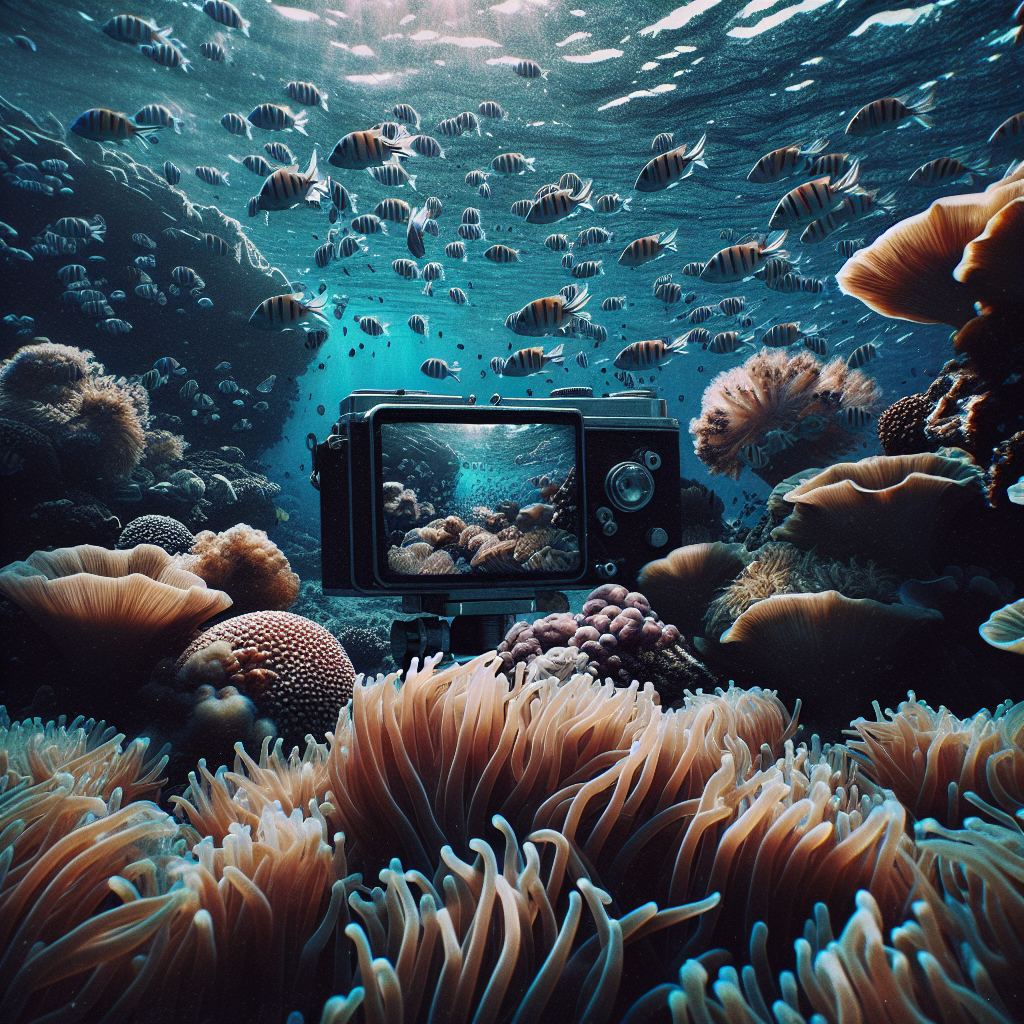Introduction to Fiji Underwater Photography
In my experience with Fiji underwater photography, I’ve been researching how capturing images beneath the waves can truly unlock the island nation’s breathtaking marine life. When I first started exploring Fiji’s vibrant coral reefs, I quickly realized that Fiji underwater photography isn’t just about taking pictures—it’s about telling a story of the ocean’s hidden wonders. I’ve found that documenting these underwater scenes allows me to connect more deeply with Fiji’s rich biodiversity and share that beauty with others.
From what I’ve learned, Fiji underwater photography provides a unique window into a vibrant world many never get to see. I want to share what I’ve learned about how these images can elevate your adventure, revealing the unspoiled marine marvels that make Fiji so special. Whether you’re a seasoned photographer or a curious traveler, I believe that diving into Fiji’s underwater realm through photography will transform your entire experience.
Discovering Marine Wonders Through Fiji Underwater Photography
Unveiling Coral Reef Ecosystems
In my journey with Fiji underwater photography, I’ve discovered that the coral reefs here are some of the most stunning in the world. I recommend diving into sites like the Great White Wall or the Rainbow Reef, where the vibrant corals create a kaleidoscope of colors. From my research and personal dives, I’ve found that capturing the intricate details of coral polyps and the bustling marine life around them truly showcases Fiji’s underwater diversity.
Through my camera lens, I’ve documented schools of tropical fish, graceful manta rays, and even elusive nudibranchs. I believe that Fiji underwater photography allows us to preserve these delicate ecosystems and inspire others to protect them. The clarity of Fiji’s waters makes it an ideal location for capturing crisp, breathtaking images that reveal the reef’s complex beauty.
Marine Creatures in Their Natural Habitat
From what I’ve learned, Fiji is a sanctuary for marine creatures like reef sharks, turtles, and colorful reef fish. I’ve found that Fiji underwater photography offers the chance to record these animals in their natural environment, often capturing moments of grace and curiosity that are impossible to see from above water. I recommend approaching these creatures with patience and respect, which is crucial for ethical underwater photography.
In my personal experience, capturing a close-up shot of a curious turtle or a passing school of barracudas has been a highlight. I believe these images not only elevate your adventure but also deepen your appreciation for Fiji’s marine biodiversity. My research shows that these vibrant photos can serve as powerful tools for conservation awareness and storytelling.
Gear and Techniques for Capturing Stunning Underwater Shots in Fiji
Essential Equipment for Fiji Underwater Photography
In my experience, having the right gear makes all the difference in Fiji underwater photography. I recommend investing in a waterproof housing compatible with your camera, a reliable strobe or underwater flash, and wide-angle lenses for capturing large scenes. From what I’ve gathered, Fiji’s clear waters give you excellent visibility, so using high-quality equipment results in sharper, more vibrant images.
I’ve discovered that maintaining proper buoyancy control is essential for steady shots and avoiding damage to fragile corals. I also suggest bringing a good underwater light for low-light conditions or night dives. Based on my research, packing lightweight yet durable gear allows you to explore multiple sites comfortably, maximizing your photographic opportunities in Fiji’s diverse underwater landscapes.
Mastering Techniques for Fiji Underwater Photography
From what I’ve learned, mastering proper shooting techniques can significantly improve your Fiji underwater photography results. I recommend practicing close-up shots to emphasize details and using the rule of thirds to compose engaging images. I’ve found that adjusting your camera’s settings for the underwater environment—such as a higher ISO and wider aperture—helps capture vibrant colors and sharp focus.
In my experience, patience is key; waiting for the perfect moment often results in the most compelling photos. I also suggest experimenting with different angles and perspectives, like shooting upwards toward the surface or capturing reflections on the reef. I believe that honing these techniques will elevate your Fiji underwater photography skills and lead to stunning, memorable captures.
Top Dive Sites in Fiji for Underwater Photography Enthusiasts
The Great White Wall
In my exploration of Fiji’s top dive sites, the Great White Wall stands out as a must-visit for underwater photographers. I’ve found that the sheer white coral formations create an otherworldly backdrop, especially when illuminated by sunlight filtering through the water. I recommend visiting during calm weather to maximize visibility and light conditions for Fiji underwater photography.
From my personal dives, I’ve captured mesmerizing images of the wall’s textured surface and the abundant marine life that inhabits it. I believe that this site offers unparalleled opportunities for dramatic shots that truly showcase Fiji’s underwater magic. My advice is to go early in the morning when the water is calm and the lighting is optimal for photography.
Rainbow Reef
Another exceptional location I recommend is Rainbow Reef, famous for its vivid coral formations and diverse marine species. I’ve learned that the vibrant colors here are a photographer’s dream, especially when using a macro lens for close-ups of tiny creatures like nudibranchs or shrimps. I’ve also captured stunning wide-angle shots of the reef’s sweeping panoramas.
From what I’ve experienced, the best time for Fiji underwater photography at Rainbow Reef is during the mid-morning hours, when sunlight penetrates deeply and enhances the reef’s colors. I believe that exploring this site will greatly enrich your collection of underwater images and deepen your appreciation for Fiji’s marine richness.
Tips to Elevate Your Fiji Underwater Photography Experience
Plan According to Conditions
In my experience, planning your dives around weather and water conditions is crucial for successful Fiji underwater photography. I recommend checking local weather reports and tide charts to choose optimal times when visibility is high. From what I’ve learned, calm seas and clear water dramatically improve your chances of capturing vibrant, detailed images.
I’ve found that being flexible and ready to adapt to changing conditions often leads to unexpected photographic opportunities. For example, waiting for the right moment when sunlight hits a school of fish or a passing manta can produce extraordinary shots. I believe that good planning enhances not only your safety but also the quality of your Fiji underwater photography results.
Respect Marine Life and Environment
From my research and personal experience, practicing responsible diving and photography ethics is essential. I recommend maintaining a safe distance from marine creatures and avoiding touching or disturbing delicate corals. I believe that respecting the environment ensures that Fiji’s underwater beauty remains pristine for future generations.
In my opinion, taking time to observe behavior and wait for natural moments leads to more authentic and compelling photos. I’ve found that ethical practices not only protect marine ecosystems but also help build trust with marine life, making your Fiji underwater photography more successful and meaningful.
References and Resources
Throughout my research on Fiji underwater photography, I’ve found these resources incredibly valuable. I recommend checking them out for additional insights:
Authoritative Sources on Fiji underwater photography
-
Fiji Government Tourism
fiji.gov.fjExcellent resource for understanding Fiji’s marine conservation efforts and dive regulations, essential for ethical Fiji underwater photography.
-
Scuba Diving Magazine
scubadiving.comProvides expert tips on underwater photography gear and techniques suitable for Fiji’s diving conditions.
-
Fiji Tourism Official Site
fiji.travelOffers detailed guides on top dive sites and best times for Fiji underwater photography adventures.
-
Underwater Photography Guide
underwaterphotography.comProvides technical advice and inspiring galleries perfect for enhancing your Fiji underwater photography skills.
- Gear and Techniques for Fiji Underwater Photography
- Top Dive Sites in Fiji for Underwater Photography Enthusiasts
Frequently Asked Questions
What is the best time of year for Fiji underwater photography?
In my experience, the best time for Fiji underwater photography is during the dry season, from May to October, when the waters are clearest and visibility is at its peak. I recommend planning your dives around calm weather conditions to capture vibrant, sharp images of Fiji’s marine life and coral reefs.
How can I ensure ethical Fiji underwater photography?
From what I’ve learned, practicing responsible diving and photography is essential. I recommend maintaining a respectful distance from marine creatures, avoiding touching corals, and not disturbing the natural environment. Ethical practices help preserve Fiji’s underwater beauty for future generations and improve your chances of capturing genuine moments.
What gear do I need for Fiji underwater photography?
In my experience, a good waterproof camera housing, a reliable strobe or flash, and wide-angle or macro lenses are vital. I suggest lightweight, durable equipment suited for Fiji’s clear waters, and always check your gear before dives to ensure optimal performance. Having the right gear allows you to capture Fiji’s underwater wonders in stunning detail.
What are some top sites for Fiji underwater photography?
My personal favorites include the Great White Wall and Rainbow Reef. These sites offer extraordinary opportunities to photograph vibrant coral formations, diverse marine life, and dramatic underwater landscapes. I recommend visiting early in the day for the best lighting and visibility for Fiji underwater photography adventures.
Conclusion
In conclusion, my research on Fiji underwater photography has shown me that capturing the island’s vibrant marine ecosystems is both rewarding and transformative. The ability to document and share Fiji’s underwater wonders elevates your entire adventure, providing memories that last a lifetime. I hope this guide helps you understand how Fiji underwater photography can deepen your connection with this incredible ocean paradise and inspire you to explore its depths responsibly and creatively. Based on my experience, I believe that every dive in Fiji holds the potential for extraordinary images that reveal the hidden marine treasures beneath the surface.
Find out more information about “Fiji underwater photography”
Search for more resources and information:








Comments are closed